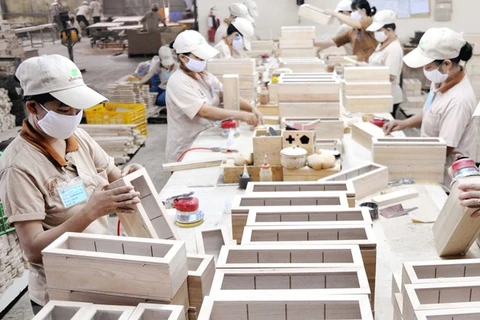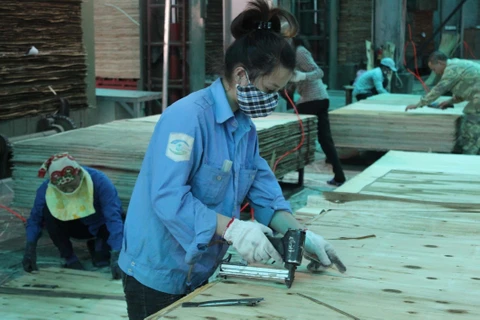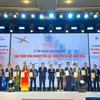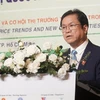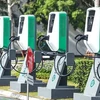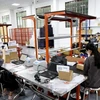Hanoi (VNA) – The wood and forestry export turnover for this year needs to surpass 11 billion USD, Prime Minister Nguyen Xuan Phuc told the agriculture sector at a forum held in Hanoi on February 22.
Vietnamese wood products only account for 6 percent of the global market share, so a development strategy must be formed to turn Vietnam into a wood processing export centre by 2030, he said.
To realise the goal, Minister of Agriculture and Rural Development Nguyen Xuan Cuong said the sector will effectively carry out the Law on Forestry and build documents guiding the implementation of new international commitments – such as the Comprehensive and Progressive Trans-Pacific Partnership (CPTPP) as well as the Voluntary Partnership Agreement (VPA) on Forest Law Enforcement, Governance, and Trade (FLEGT) – to support the wood processing and forestry industry’s stable development.
The agriculture sector will work to ensure the supply of about 37.5 million cu.m of timber material for the wood processing industry, grant sustainable forest management certifications according to international practices and criteria, and limit the export of raw wood material.
It will also increase the productivity and quality of planted forests and encourage farmers to change their cultivation habits from extensive to intensive farming.
The ministry will seek to maintain traditional markets and expand into new areas of potential to optimise the opportunities brought about from the free trade agreements.
In 2018, Vietnam earned 9.38 billion USD from exporting wood and forestry products, making up over 23 percent of the agriculture sector’s export turnover and recording a trade surplus of 7 billion USD.
The country now has about 4,500 wood processing and forestry businesses, 95 percent of which are private firms.
Vietnamese wood and forestry products have been sold to over 120 nations and territories. The country is the fifth largest exporter of wood and forestry products in the world, second in Asia, and first in Southeast Asia. –VNA
VNA

